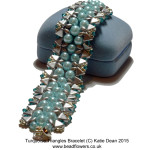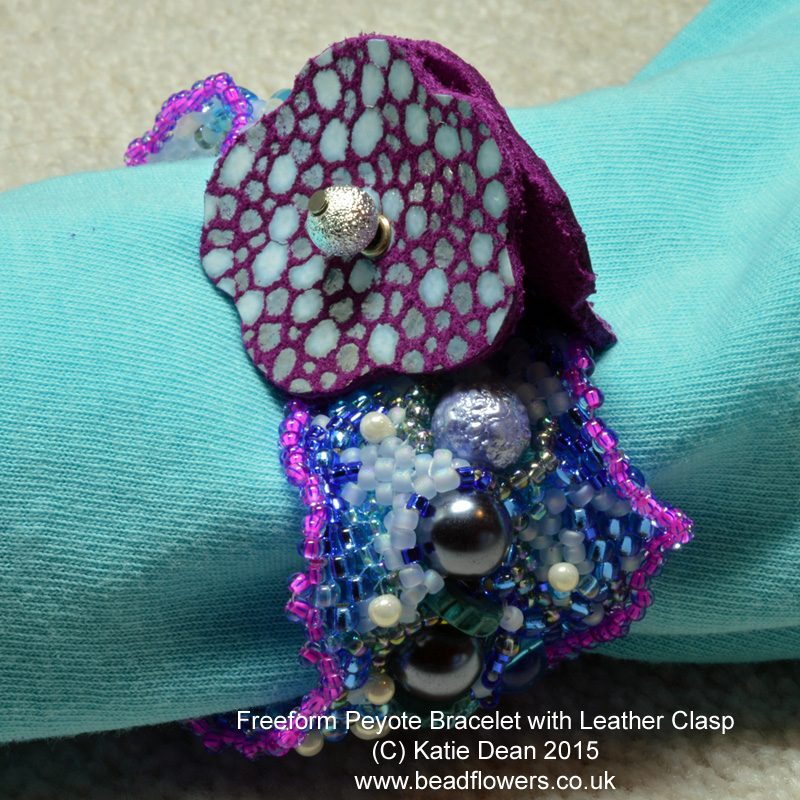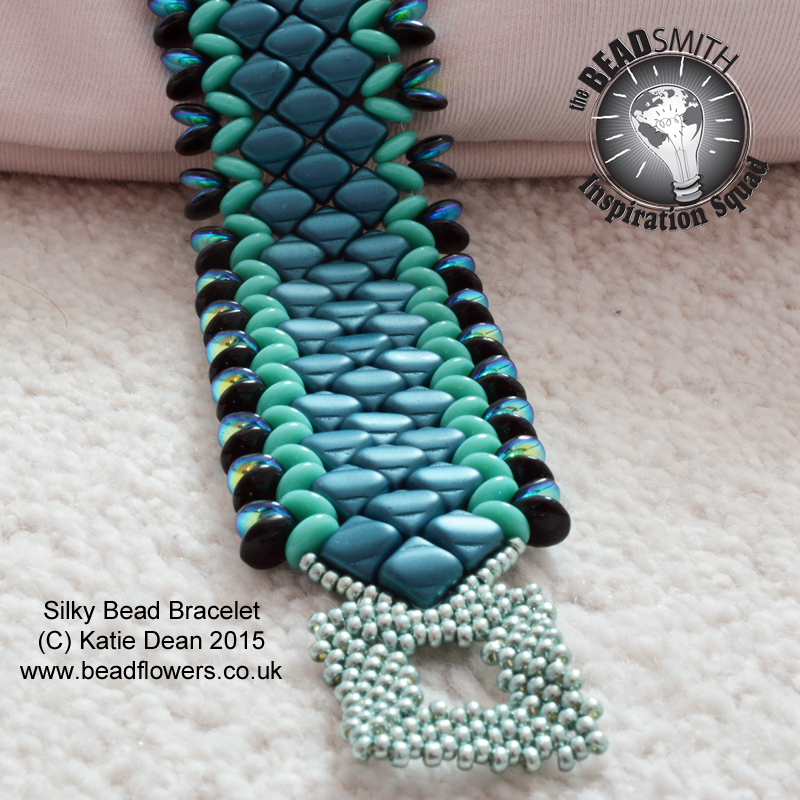Copyright: What is it?
 I have come across a number of instances where copyright has been challenged in the beading world, so I wanted to create a series of blog posts looking at the different ways in which it affects beaders. The first question I wanted to ask myself was, ‘what is copyright?’
I have come across a number of instances where copyright has been challenged in the beading world, so I wanted to create a series of blog posts looking at the different ways in which it affects beaders. The first question I wanted to ask myself was, ‘what is copyright?’
Copyright origins
Generally, the answer to any question has something to do with its origins and history. I am a historian by training, but I had no idea where copyright law originated. It turns out, it was back around the era of history in which I specialised. Once the printing presses were established in early modern Europe, copying works without an authors’ permission became a real problem. The 1662 Licensing Act passed by Charles II decreed that printing presses must register the books that they printed and a single copy of each book must be held in a central repository. In 1710, Queen Anne’s government passed a law, the Statute of Anne, which recognised that authors and their families were suffering as a result of printers making copies of and selling their books, without first seeking their permission or offering them any remuneration. Early copyright laws acknowledged that the creator of a work had a right to benefit from it financially and to determine how it could be used, but, as remains the case today, this right was granted for a limited amount of time. The amount of time differs from one country to another, but is typically for the author’s lifetime, plus a limited number of years after their death.
Copyright scope
As you might imagine, copyright law is a vastly complex subject. It may have started as a means of protecting the rights of authors, but it soon expanded to include a whole range of different types of intellectual property. This area of law has had four centuries to develop, so the advent of  different types of invention, new technologies and new problems have all conspired to create a quagmire that is pretty impossible to understand in detail, unless you are a specialist intellectual property lawyer. Notice that I am now referring to ‘intellectual property’ – therein lies the key to why copyright matters if you are a beader. We are talking about a form of property – a possession which can be bought, sold and stolen. Copyright law was designed to acknowledge that a person has employed time and skill in order to create something which others may want to use. If it were a physical object that had been constructed, it might be easier to understand how and why it can be traded, so it may be helpful to start thinking about copyright in those terms.
different types of invention, new technologies and new problems have all conspired to create a quagmire that is pretty impossible to understand in detail, unless you are a specialist intellectual property lawyer. Notice that I am now referring to ‘intellectual property’ – therein lies the key to why copyright matters if you are a beader. We are talking about a form of property – a possession which can be bought, sold and stolen. Copyright law was designed to acknowledge that a person has employed time and skill in order to create something which others may want to use. If it were a physical object that had been constructed, it might be easier to understand how and why it can be traded, so it may be helpful to start thinking about copyright in those terms.
What is the ‘possession’ that is being defined and protected by copyright law? Well, firstly, although it is termed ‘intellectual’, it must be more than just an idea. It should have a tangible product. If you are looking to protect your rights to use an idea, you might be wanting to consider a ‘patent’, not a ‘copyright’. The law also gives guidelines as to what is and is not included. The thing that you are protecting must be substantive and specific. An author will not be able to ‘copyright’ a single word or a sentence (although it may be possible to protect this by making it into a Trademark). In beading terms, no one beader can copyright a beading stitch – this is the language of beading, so it would be comparable to an individual trying to claim copyright of the English language! You can copyright the way in which you use that language, so the particular combination of beads used in Peyote stitch to create a beaded item. To take another example, a cartoon character like Mickey Mouse can be protected by copyright to the extent that nobody else can use a black mouse that looks and behaves like Mickey, but there is nothing to stop you from creating a blue cartoon mouse that has human traits and a personality: you could claim the copyright to such a creature if you created it.
 The other point to consider is that a copyrighted product does not have to be ‘unique’. You cannot protect yourself against coincidence, so if I make a piece of chocolate gateau from beads, then discover that another beader has done exactly the same thing in a completely different part of the world, this does not necessarily mean that we cannot both own the copyright. The distinction lies in the difference between ‘copying’ and ‘coincidence’. Two sweet-toothed beaders might easily have the same idea and make it independently. We may both choose to use different techniques or different materials to make our slices of chocolate gateau and this would be a simple coincidence. We would both have the right to sell our designs to the beading world. However, if another beader sees my beaded chocolate gateau on the internet, or in a magazine, or in a book and then deliberately copies the idea, they are infringing my copyright. This can of course be very difficult to prove, which is why you usually see the copyright symbol in conjunction with a year. This states that ‘I came up with my idea in year x’, so if someone then claims to have come up with the same idea after mine has been published, it may call into question whether or not they copied the idea. This is where the legal challenge would come in – the burden of proving that the author of the later idea had seen the original.
The other point to consider is that a copyrighted product does not have to be ‘unique’. You cannot protect yourself against coincidence, so if I make a piece of chocolate gateau from beads, then discover that another beader has done exactly the same thing in a completely different part of the world, this does not necessarily mean that we cannot both own the copyright. The distinction lies in the difference between ‘copying’ and ‘coincidence’. Two sweet-toothed beaders might easily have the same idea and make it independently. We may both choose to use different techniques or different materials to make our slices of chocolate gateau and this would be a simple coincidence. We would both have the right to sell our designs to the beading world. However, if another beader sees my beaded chocolate gateau on the internet, or in a magazine, or in a book and then deliberately copies the idea, they are infringing my copyright. This can of course be very difficult to prove, which is why you usually see the copyright symbol in conjunction with a year. This states that ‘I came up with my idea in year x’, so if someone then claims to have come up with the same idea after mine has been published, it may call into question whether or not they copied the idea. This is where the legal challenge would come in – the burden of proving that the author of the later idea had seen the original.
Are you confused yet?! The law is full of nuance and, as you may already be thinking, if you see a design and like something about the idea, at what point are you guilty of copying it and at what point does it become your own? Well, this is the really big grey area, so I have written a separate post to suggest some ideas for guiding you through this minefield if you are a beader.
The final point to make within the scope of copyright is about financial gain. Copyright only matters because it enables someone to earn an income from their creativity. This is back to the idea of a possession – something that can be bought, sold or stolen. Copyright gives the owner of that ‘possession’ the right to decide what they do with it: they may decide to give it away for free, or they may decide that other people can use it in certain ways for free, but have to pay for the right to do other things with it. The point is that the right to decide on all of this lies with the creator, not with someone else.
Registering Copyright
In most cases, copyright automatically belongs to the creator, without having to be officially registered anywhere. However, if you are looking to enforce your copyright, you may find that you need to have first registered your entitlement to the copyright. So if you are a designer looking to protect your income, take some legal advice to find out exactly what you need to do. Also bear in mind that the copyright law of your native country may not protect you from copyright infringement by an individual in another country.
Enforcing Copyright
So what do you do if you have come up with a great beading design, published it on the internet and then find someone else trying to sell it? Copyright law is generally regarded as a civil matter and, in general you will be responsible for taking action to uphold your rights. So in theory, you would need to hire an intellectual property lawyer, have them take action to process a claim through the courts and defend your rights. This is going t o cost a lot of money, so is it really worth it? In the beading world, the answer is usually ‘no’, but does that mean you should sit back and let someone else benefit from your hard work and skill? Of course not. Most copyright issues are actually sorted out via a conversation. It is often the case that the infringer is not even aware that they are doing something wrong, so when this is pointed out to them, they will apologise and stop whatever they are doing. You might agree some form of compensation privately between you. In other instances, unfortunately, you may come across an individual who refuses to acknowledge that they are doing something wrong.
o cost a lot of money, so is it really worth it? In the beading world, the answer is usually ‘no’, but does that mean you should sit back and let someone else benefit from your hard work and skill? Of course not. Most copyright issues are actually sorted out via a conversation. It is often the case that the infringer is not even aware that they are doing something wrong, so when this is pointed out to them, they will apologise and stop whatever they are doing. You might agree some form of compensation privately between you. In other instances, unfortunately, you may come across an individual who refuses to acknowledge that they are doing something wrong.
If you want to find out more about how you can protect and enforce your rights as a designer, read this blog.
The take home message here should be that copyright law is in place for the very good reason that it protects the livelihood of hard-working, creative people. The details can be very complex, but you should understand the basic principles of the law, abide by them and help to ensure that others do the same.











